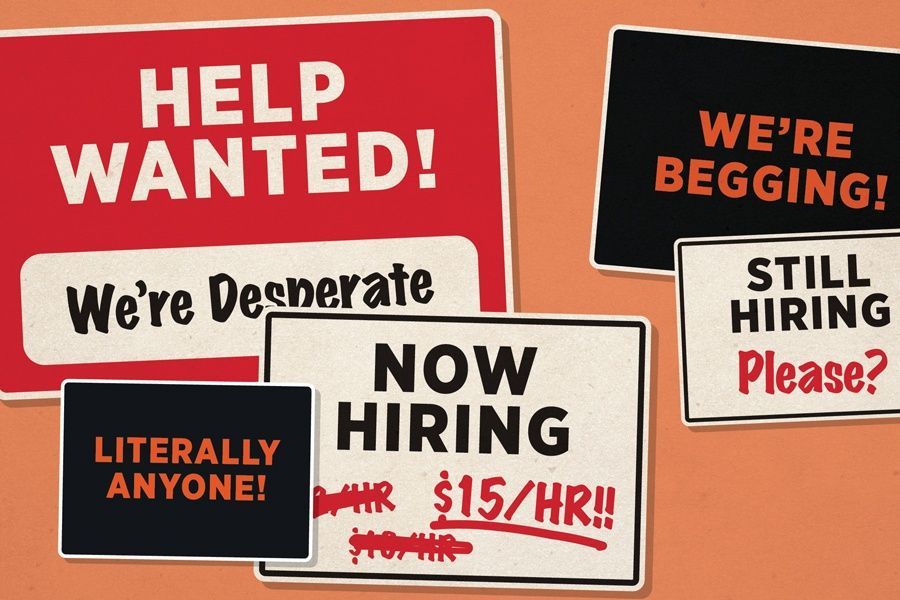Help Wanted – Desperately!

September 2022
Now, in 2022, more than ever, human service organizations, both public entities like Child and Family Services, service providers, and schools are struggling to meet their need to have a fully staffed workforce.
Everywhere I go across the US and even overseas I hear the same issue – we don’t have enough competent trained staff.
There is one question we must answer: Why don’t we?
I have heard excuses like:
“they are not out there” - they are you, you just have not reached them yet - The question is How do we reach out differently? Hiring Right is a one-day agency planning event focused on helping leadership build a plan to answer this question.
“they don’t want to work in our agency” - they don’t work to work for our agency today - The question is why don’t people want to work for our agency? Becoming an Employer of Choice is a one-day planning event for leadership to assess and plan to become a better employer of choice.
Public child and family service agencies report annual turnover of direct service line staff from 25 – 65% That is unstainable turnover and highlights there is an institutional problem that must be addressed as part of becoming an employer of choice.
I have heard from multiple residential providers that they can’t open beds because they don’t have the staff for them. You must both look at turnover and why people don’t want to work for that agency. A one-day initial planning event for agency leadership on recruiting and retaining staff will help you begin to build that remediation plan.
In foster care I have heard the same issue related to foster families; both we don’t have enough foster parents and we can’t retain them. You need to begin to think of foster parents like other employees and ask why we can’t get them and why we can’t retain them. In this situation you need agency and program leadership to do a one-day planning event focused on foster parents separately from focusing on staff to help you build a recruitment and retention plan for foster parents.
“they are asked to do the impossible” – you must assess if what you are asking staff to do is actually reasonable. You must offer work that people can reasonably succeed in. There are nationally recognized standards of practice for reasonable workloads in child welfare and education. You need to assess how your agency stacks up against recommended national standards and educate staff on how your agency meets or exceeds those standards. If your agency doesn’t meet or exceed those standards, then you need to make changes to meet or exceed recognized standards. This is part of becoming an employer of choice.
We in child and family services and education, public and private do not have the option to not serve children in need.
Serving children in needs starts with having the workforce to do it.
Step 1 Admitting we have a problem
Step 2 Determining the sources of our problem. It is always more than one source
Step 3 is making an organizational plan to remediate those problems
Step 4 Turning words into action; implementing the plan
Step 5 Reporting progress to staff quarterly
Step 6 Adjusting the plan to make sure it is making a positive difference
Don’t expect overnight success. This requires concerted action over at least one to two years.
If could become part of your strategic plan so you have board support. Have a board – agency leadership one-day strategic planning retreat. That’s all the time you need with the right facilitation. Strategic planning is a one-day joint event focused on what we need to do.
Recent reports tell us the problems we are facing in child welfare and education are universal not unique to our field.
In the following Italics have been added by me
Gallup’s 2022 State of the Global Workplace Report August 2022
According to Gallup’s 2022 State of the Global Workplace Report, 60% of respondents said they were emotionally detached at work and 19% reported being “actively disengaged.” It’s no wonder that 4.2 million Americans called it quits every single month from February to June, according to the latest data from the Bureau of Labor Statistics, with the number of unfilled U.S. jobs reaching 10.1 million at the end of that period.
When 79% of your workforce is dis-engaged at work that is a major barrier to organizational success.
How goes the Great Reshuffle?
By Cate Chapman, Editor at LinkedIn News 8.24.2022, New York Times 8.22.2022
More than 40 million Americans left their jobs last year, as the pandemic and its dislocations caused them to reassess work and life. The New York Times interviewed a group of readers who joined the Great Reshuffle, some because they wanted to pursue a dream in a more affordable locale, others because they wanted to slow down. Few had any regrets. Ian Karle, who took a big pay cut when he left the Texas oil and gas industry to become a chocolatier in Montana, says "It’s ridiculous how much happier I am here."
Businesses and industry have spent decades and lots of money assessing and determining what will make a difference in organizational success.
Gallup, a leading for-profit consulting firm has been studying workforce recruitment and retention. In the latest report it confirms what needs to happen in our sector.
Gallup 2022 Guide to Employee Engagement: Five Elements of Success
1. Measure engagement
Survey your employees using credible, comprehensive questions. Measuring the
elements of engagement that are most critical
Only if the tool actually measures engagement and that you are going to use the results to make a written plan for improving engagement and then implement and report periodic success to staff, then remeasure.
Use a 3rd external party to conduct the assessment. Staff in organizations do not trust management or HR to not retaliate if they get feedback they don’t like. You need to maximize employees feeling of safety by only providing management with consolidated results without access to what any employee submitted.
2. Have growth-oriented conversations
Bring your survey findings to life through genuine conversations. The only way to meet employees’ needs is through conversations that actively work to address those needs
Teach all supervisors how to have growth focused conversations. This is an ongoing process not an annual post performance review training plan.
3. Provide clear ongoing communications
Confusing messaging from leaders only makes managers’ lives more stressful. In times of disruption, the most basic needs are at risk — clear expectations, the right resources and opportunities to do what each person does best.
Teach all supervisors a common language focused on behavior so there is agency-wide consistent clear communications.
Get rid of things like “other duties as assigned” on job descriptions. Stop using phrases like “subject to disciplinary action up to and including termination”. Clean up language in employee handbooks and job descriptions.
4. Focus on Well-being
Employees, managers and supervisors all need to feel they are continuously developing in their work and overall lives. As work and life are now more blended than ever, it is critical that organizations address and manage employee engagement along with the five elements of wellbeing — career, social, financial, physical and community — to reduce the odds of burnout, stress, worry, anxiety and depression.
Organizations can improve the overall lives of their managers and employees with the right coaching conversations about individual strengths, work and wellbeing.
As part of an engagement survey include questions about employee week being, including work-life balance. Include in your agency’ strategic plan to enhance the well-being of employees.
5. Have strengths-based conversations
You can help make managers’ jobs easier by teaching them to have higher-quality conversations — ones that occur frequently and that focus on employees’ strengths.
Every employee has different strengths and different work and life situations. Managers know each employee well, which makes them the best person to adjust their employees’ workflows, motivate high performance and direct them to the right wellbeing resources to meet their individual needs.
To do this, think about the members of your team. What are the things that they do best every day? Where do you see them succeeding, repeatedly? And finally, how can you ensure they do more of that? These questions help generate strengths-based conversations.
Teach all supervisors to supervise for success and require all supervisors to operate in this model focused on behaviors for success in their job so there is agency-wide consistent practice. It is as important to staff to feel they are all being equitably treated in a same consistent manner as it is for youth in care.
Public and private agencies can choose to hang on tightly to the status quo and then they will still face the same problem tomorrow as they have today – lack of a fully staffed competent workforce
OR
Public and private agencies can choose to change practice…..
Strategically planning to be a successful agency
Becoming an employer of choice
Improving employee engagement & well being
Proving success-focused management/supervision
When you are ready to move from the status quo, contact me.
The future for your agency is in your hands and you must make the decision that you are willing to move from the status quo for the sake of our children’s future.
LEADING FROM OUTSIDE THE BOX is a monthly newsletter for human services leaders.
Its purpose is to challenge your thinking and help you improve organizational and outcome performance.
To receive your copy free, simply email Jeff Bormaster and ask to be added to the mailing list. Feel free to share these newsletters with other human services leaders, simply include the contact information.
You can read previous issues of Leading Outside the Box at www.jeffbormasterconsulting.com/topics










